“Tent City” is gone. But the challenges of housing availability and affordability continue to plague the city of St. John’s.
Lauren Ella Burke and Sharon Curtis
Kicker
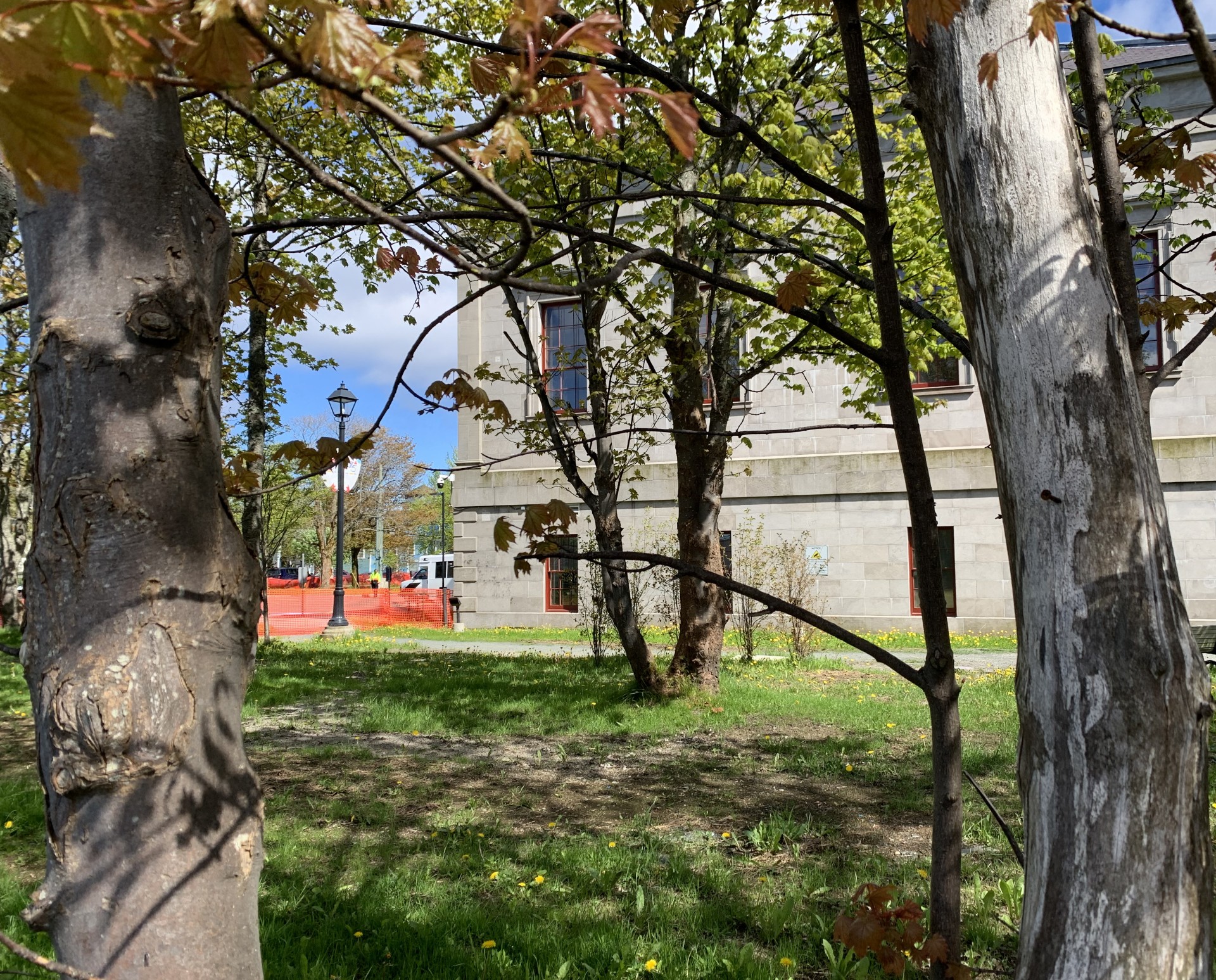
On May 3, police, government officials and contract workers descended on the Colonial Building property adjacent to Bannerman Park in St. John’s to sweep the “tent city” encampment.
Tent City was a site where those experiencing homelessness could stay and at the same time protest a lack of affordable housing and what they described as unsafe shelter conditions.
Protesters originally erected tents in Pippy Park across from the Confederation Building in early October 2023. Within a couple of weeks, the encampment was moved to the property surrounding the Colonial Building as a visual representation of the housing crisis in the province. The encampment stayed active at this location throughout the St. John’s winter.
Gregory McCain was in his tent with his friend Jeff Gellner when men in hazmat suits and balaclavas started dismantling the encampment. Residents knew the sweep was coming because they had been offered accommodations in the days leading up to the eviction.
On Jan. 8, the provincial government announced it would lease the former Comfort Inn on Airport Road owned by Clayton Hospitality, as a “transitional supportive living accommodation” for individuals experiencing homelessness. The facility is now referred to as “the hotel” by residents.
The hotel is meant to be a temporary home until residents can find longer-term affordable housing.
McCain said he felt intimidated and coerced into leaving the encampment next to the Colonial Building. He’s now living in a shelter.
“They said we’d all be together,” said McCain, who misses the sense of community at Tent City.
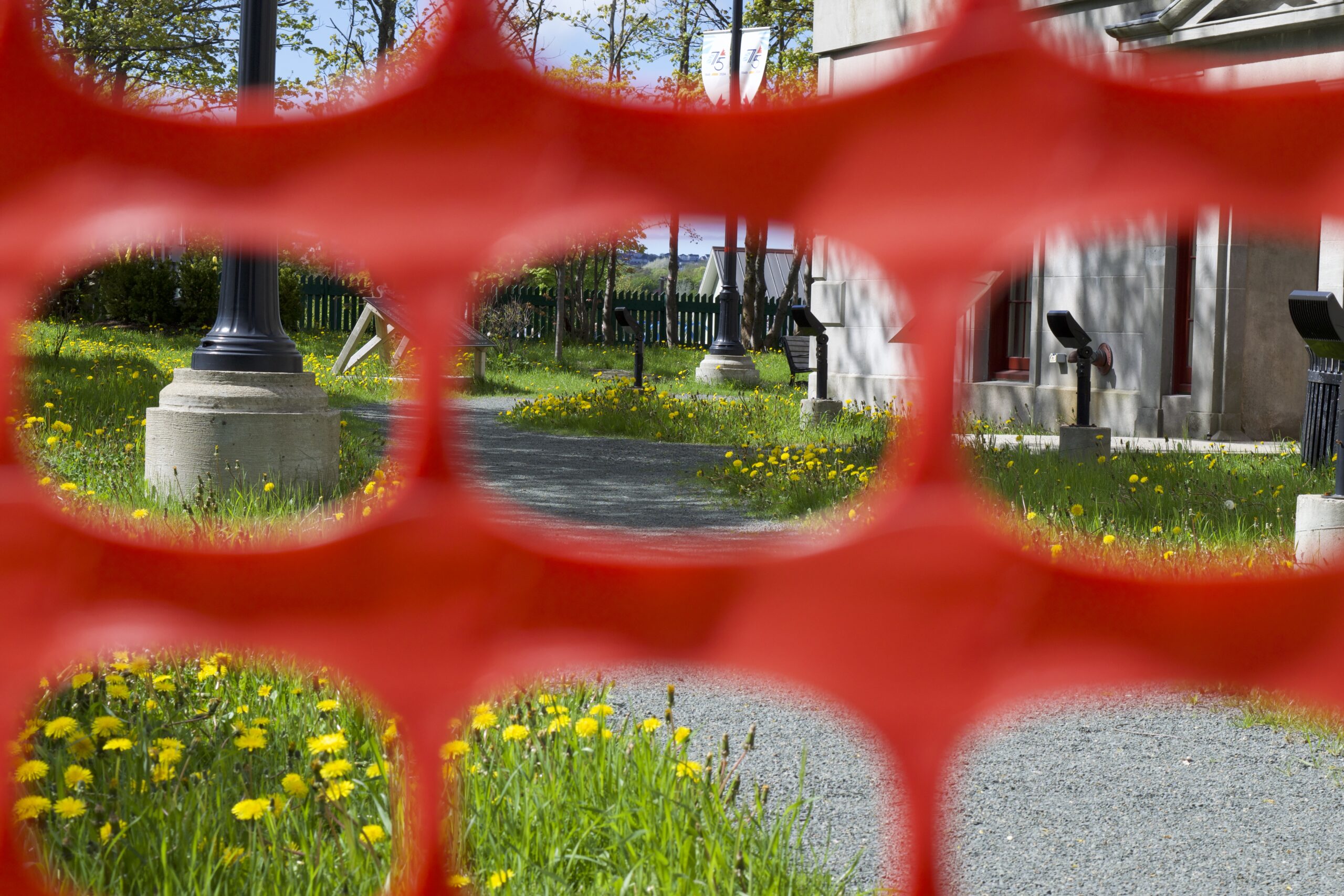
The protesters, including homeless people and volunteers, were putting pressure on the provincial government to do more to provide them with safe and affordable housing.
After about two weeks at Pippy Park last fall, the protesters relocated to the Colonial Building property and Bannerman Park. The city of St. John’s barred them from Bannerman Park on Nov. 29, so their encampment was limited to the Colonial Building grounds until they were evicted on May 3.
After about seven months of protest, they were forced off the Colonial Building grounds and back into the systems they were protesting against.
Housing Minister Fred Hutton suggested the final straw for government was a propane fire that started in one of the tents shortly before the eviction.
According to a Canadian Press story, Infrastructure Minister John Abbott said nine of the 12 remaining residents of the encampment had accepted some kind of accommodations from the government.
“In a sense, we are making sure the individuals are housed, so nobody is being forced off the site,” Abbott was quoted as saying in the CP article.
However, some resident protesters tell a different story. Why and how they were moved has been debated; some do not think it was because of safety issues.
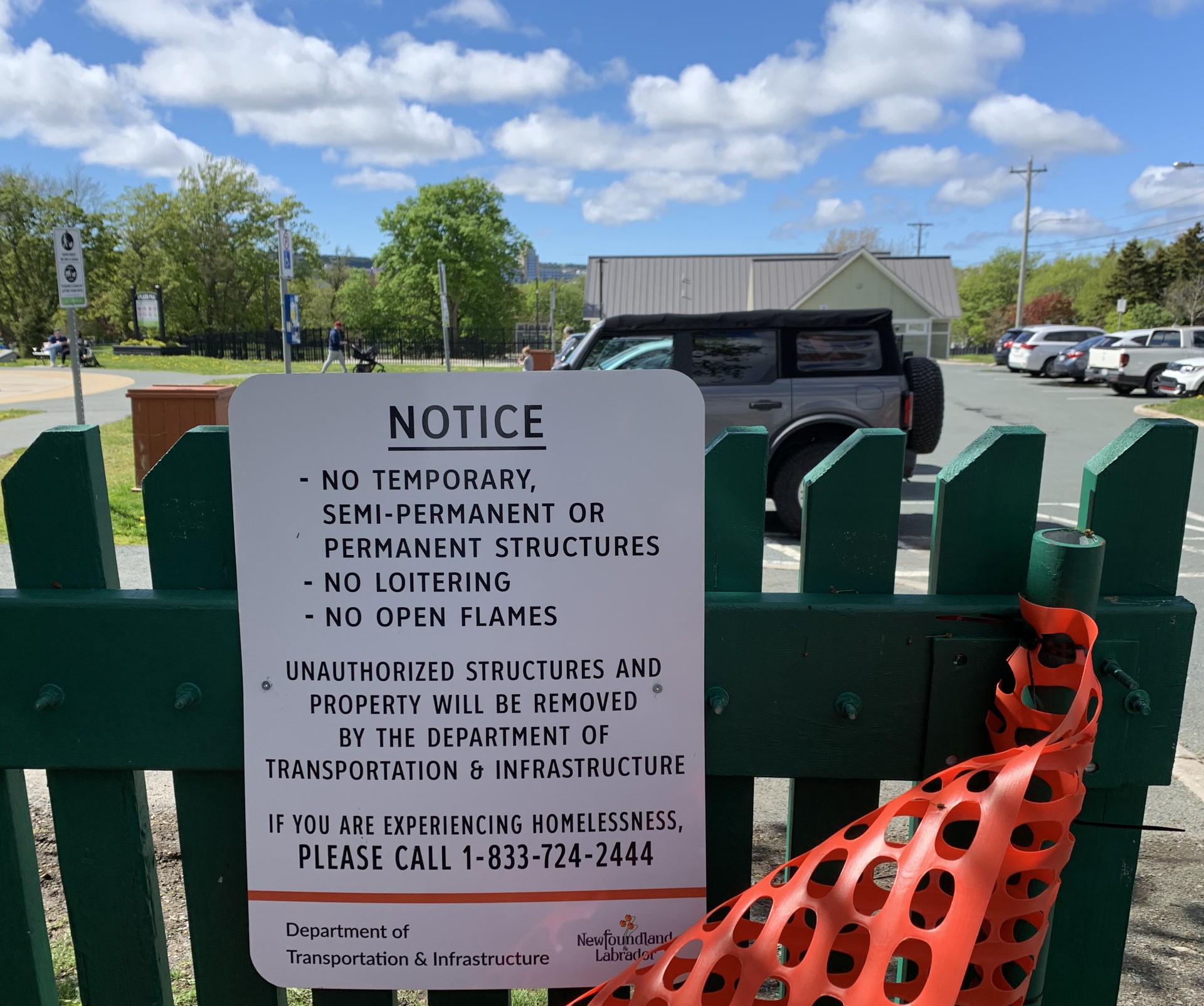
Encampment volunteers Laurel Huget and Kerri Claire Neil say they do not believe it was related to safety concerns.
“Tourism season was ramping up, and Tent City was considered an eyesore,” Huget said. “Then they decided to evict everyone. The government does not care about poor people.”
Neil suggested the government was concerned about a folk festival coming up and a cruise ship that was scheduled to visit the city a few days after the eviction.
“. . . I don’t think government wanted the tourists to see Tent City,” Neil said. “They just wanted to sweep the homelessness crisis under the rug.”
“If safety was the issue, then they would have been removed long before winter arrived,” said James Dinn, leader of the Newfoundland and Labrador New Democratic Party.
He said there’s an illusion that by moving people out of the encampment the residents are now safer. But he noted some of the people who were at the encampment are setting up tents elsewhere.
“It’s just as unsafe for those people now as it was (in the encampment),” said Dinn.
Safety in numbers
Those who are homeless face many dangers including exposure to extreme cold and hot weather, fire, hunger, lack of clean water and sanitation, and physical assaults. There are also the psychological elements of shame, isolation and abandonment.
Jeff Gellner said while living at the encampment he and other residents dealt with a lot of hate from passers-by.
“People (were) coming and throwing stuff at us, yelling at us,” he said.
Yet he preferred to stay at the encampment.
“We all protected each other, we all had each other’s backs,” he said.
Since the encampment was torn down, Gellner does not know where many of his friends are and is not able to get in contact with them.
McCain said being at the encampment was still a struggle, but it differed from his shelter experience. Residents received a lot of support from people in the form of donations, contributions and kindness.
If something was stolen at the encampment, said McCain, someone would always replace the item. He said it’s not quite like that in the shelters.
There was sometimes conflict within and from outside the encampment, but McCain said he felt safer there because he was surrounded by his friends.
“Nobody really suffers, nobody’s really hurt,” said McCain. “When you’re living like the way we live, as a community, everybody cares for each other.”
Joedy Wall, the Opposition critic for housing, said not all communities felt animosity toward the Tent City residents. In Wall’s district of Cape St. Francis, just outside of St. John’s, people reached out to help in any way they could.
“It wasn’t negative,” Wall said. “Ladies from Flatrock were dropping off clothes, and individuals from Torbay were dropping off food.”
“When you look at the lack of affordable housing, it leads to little or no options for people who are looking for housing, and then where do people turn? They’re forced into unsafe living conditions,” Wall said.
Homeless people who struggle with mental illness, addictions and other health-care issues are likely to be hospitalized for longer periods of time, which is an added strain on our health-care system. Most homeless people do not have a provincial medical care plan or a family doctor.
Among 22 of the world’s most prosperous countries, Canada’s homelessness rate ranks as the ninth worst per capita, according to an article posted by Our World in Data. Across Canada, there are 150,000 to 300,000 homeless people. The impact on society is in the range of $7.05 billion per year in Canada.
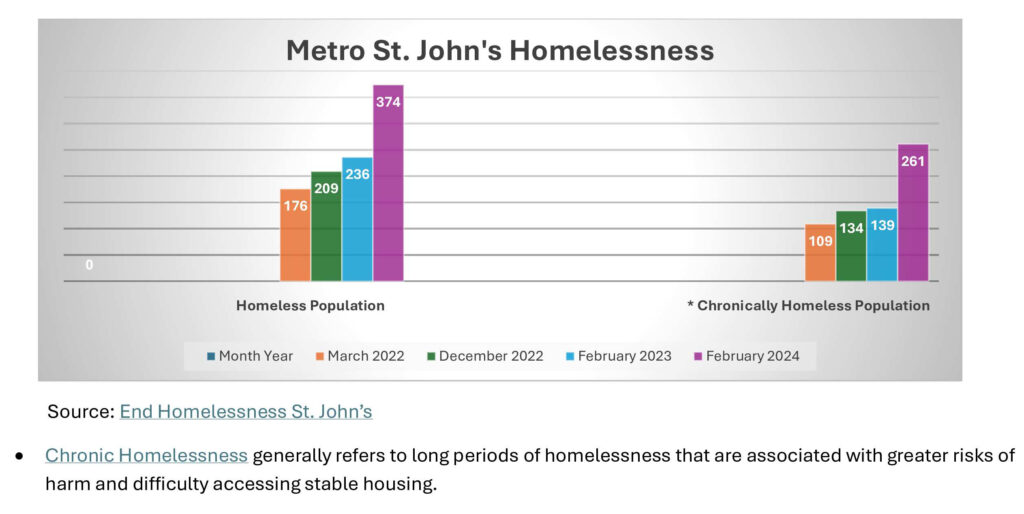
End Homelessness St. John’s estimates there are 374 homeless people in the capital city with 261 of them experiencing “chronic homelessness” – long periods of homelessness associated with greater risks of harm and difficulty accessing stable housing.
In major centres, such as Toronto, as many as 9,000 people are homeless on any given night. The population of Toronto is about 2.8 million. Toronto has the highest rate of homelessness in Canada at 0.32 per cent.
The population of St. John’s is 111,536. A count conducted by End Homelessness suggests adults aged 30 to 54 make up 40 per cent of St. John’s homeless population, youth (ages 16 to 29) make up 38 per cent, and seniors (ages 55 and over) make up 21 per cent.
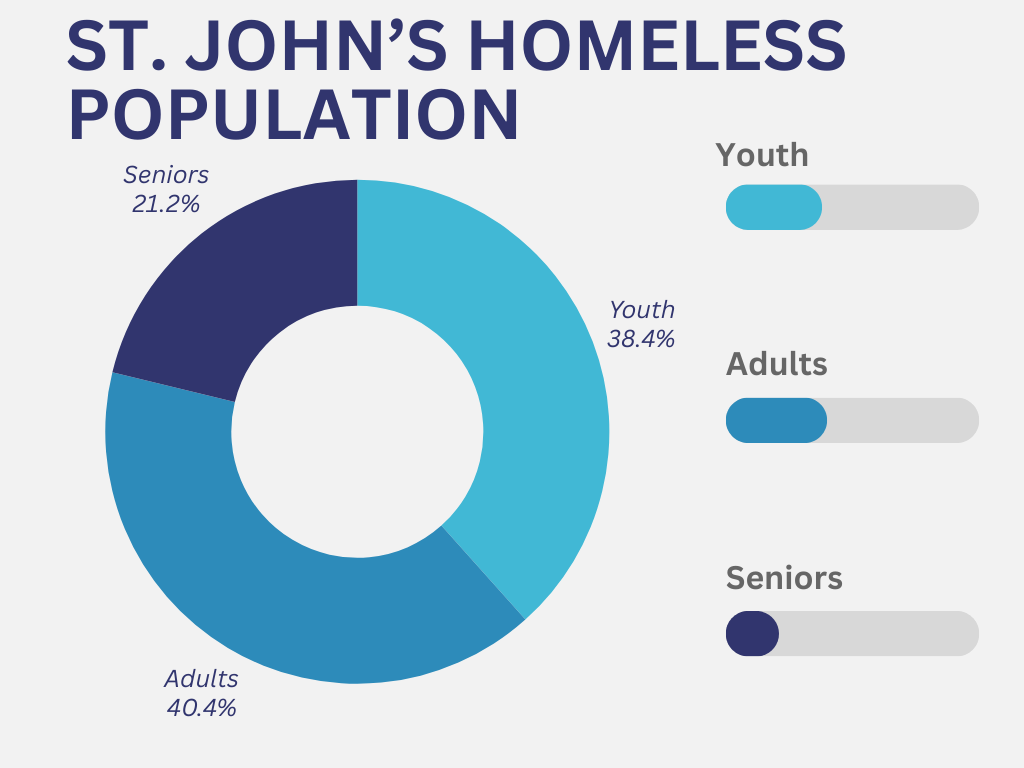
Homeless populations can be hard to track because some people are considered to be provisionally accommodated and are often referred to as the hidden homeless – encompassing those in transitional housing, those who are unsheltered, temporarily staying with friends or relatives, in hotels or motels, or in institutional care.
People who are between the ages of 45 and 54 make up the largest percentage of the homeless population in Canada, and those between the ages of 15 and 34 make up the largest percentage of the hidden homeless population, according to Statistics Canada’s 2020-2022 Point in Time Count.
Causes of homelessness
Gellner said he left his job in Ontario and moved to St. John’s for a new job. He arrived on Christmas Eve, 2023. But the job fell through, and he found himself homeless.
“I got stuck (here),” said Gellner. “Then a friend brought me to Tent City.”
Residents of the encampment were told by government they would be housed before Christmas. But some of the residents spent the entire winter in their tents.
The main causes of homelessness in Canada are financial challenges, housing cost increases, lack of affordable housing, inflation, physical disabilities, mental illness, other health-related issues, and the need to escape from abuse.
encampment is a matter of life and death. She spoke with Kicker recently
about possible approaches to the homelessness crisis.
In 2023, a Newfoundland Housing Needs Estimate suggested 4,125 households in St. John’s – about 22 per cent of the city’s households – face what is referred to as “core need.” This means they struggle to find adequate housing. Most troubling, 11 per cent (2,035 households) live in “deeply unaffordable” dwellings.
The same report estimates 32 per cent of the city’s households (around 5,895 households) spend more than 30 per cent of their income on housing. According to the Canada Mortgage and Housing Corporation, housing is considered affordable if it costs less than 30 per cent of a household’s income
Housing costs have increased due in large part to a housing shortage. Demand is outpacing supply. According to the estimate, there is a shortage of about 1,110 housing units in St. John’s. It also suggests the shortage might increase to 3,080 by 2028.
Dinn said it has been a struggle for people to find housing since he was elected in 2019. He says it’s a failure on government’s part that the homelessness situation in St. John’s has gotten to this point.
Dinn says the executive director of End Homelessness told him in 2019 that St. John’s did not have the kind of housing problems seen in larger cities. It was rare to see people sleeping in tents, doorways and other similar situations.
“In the space of five years, we’ve now arrived at that,” said Dinn.
Dinn has proposed solutions to the government to help address the housing issues. He has suggested using the Grace General Hospital site for more non-market community-based housing to fund organizations such as the Cooperative Housing Association of Newfoundland and Labrador. (The decommissioned Grace Hospital is set for demolition, freeing up a large block of land.)
“The systemic failure from this current government has certainly flamed the housing crisis here in Newfoundland and Labrador, and it is a crisis,” he said.
The government must keep people safe, Dinn said. And if there is no viable option, he added, they must keep people safe where they are already located.
“I think government failed to do that (at the Tent City encampment) as well,” Dinn said. “We’ve asked for things (such as) setting up electricity, finding alternative heat sources, setting up an office and providing staff there at the Colonial Building so they could process people. But they steadfastly refused to do that.”
Kicker journalists contacted the offices of Infrastructure Minister John Abbott and Housing Minister Fred Hutton, but government representatives said they were unavailable to be interviewed.
An aging population
People on fixed incomes, including seniors, are vulnerable groups who are increasingly facing homelessness, said both Dinn and Doug Pawson, who is the executive director of End Homelessness St. John’s.
These groups are ending up in the shelter and housing systems among everyone else who doesn’t have anywhere to go. Encampments can provide a form of stable living for those who may feel their needs aren’t being met in these systems. But regardless of where one chooses to stay, there’s always potential danger.
Pawson said encampments throughout the country have proven to be incredibly unsafe for various reasons.
“I don’t think that we should accept that encampments are a part of our reality, because we need to invest in housing,” Pawson said. “I think I worry that if we normalize encampments as a response to the housing crisis that we let governments off the hook from making the big investments into housing that need to be happening.”
The 2024-25 provincial budget is investing more than $13 million for a Transitional Supportive Living initiative.
Transitional supportive living initiatives include the one at the former hotel on Airport Road. Those who stay at the site will have help transitioning from homelessness to more stable accommodations. They’re also receiving on-site health support and life-skills development.
“We’re going to ensure that folks, who are the most vulnerable to homelessness within the housing market, that they’re protected and that they have access to the resources needed to ensure their stability in their homes,” Pawson said.
The Supportive Living Initiative won’t end homelessness overall, Pawson said, but it will make a dent.
“It makes a significant investment into folks who are experiencing chronic homelessness,” he said. “It will help close the gap on chronic homelessness.”
The province is facing challenges with housing availability, said Pawson. Some issues include having an unfettered system for short-term leasing and short-term rentals such as Airbnbs. Because there are no regulations that say how many units one person can own, or how many units can exist in one area.
Lack of investment in housing and non-market housing is another challenge, said Pawson. These investments should have started 30 years ago, he suggested.
Non-market housing is housing controlled by non-profit organizations or by government. These units are rented to low and moderate-income households at a below-average rental rate or are made to be sold at a price lower than market value.
“Now you’re seeing floods of investment at the federal level into housing, but it takes a long time to build,” Pawson said. “We need to make sure that this province is going to be able to avail of those federal investments as well.”
Federal investments include Canada’s Housing Action Plan. The plan is to build more houses and build them faster. The government has more than $40 billion in loan funding available under this plan, according to the Government of Canada’s website.
’It’s a lot of stigma’
Gregory McCain
It was a sunny day, and Maggie was sunbathing on the warm pavement. Looking at her, McCain talked about how he is still doing all he can to obtain long-term housing for himself and his dog.
McCain’s story is just one of hundreds.
Some people are new to the province’s housing and shelter systems. Some people have been in them for years.
Some of the people from the encampment may still be, as they say, “sleeping rough” in tents around the city.
Some, such as McCain, are still trying to advocate for themselves and others.
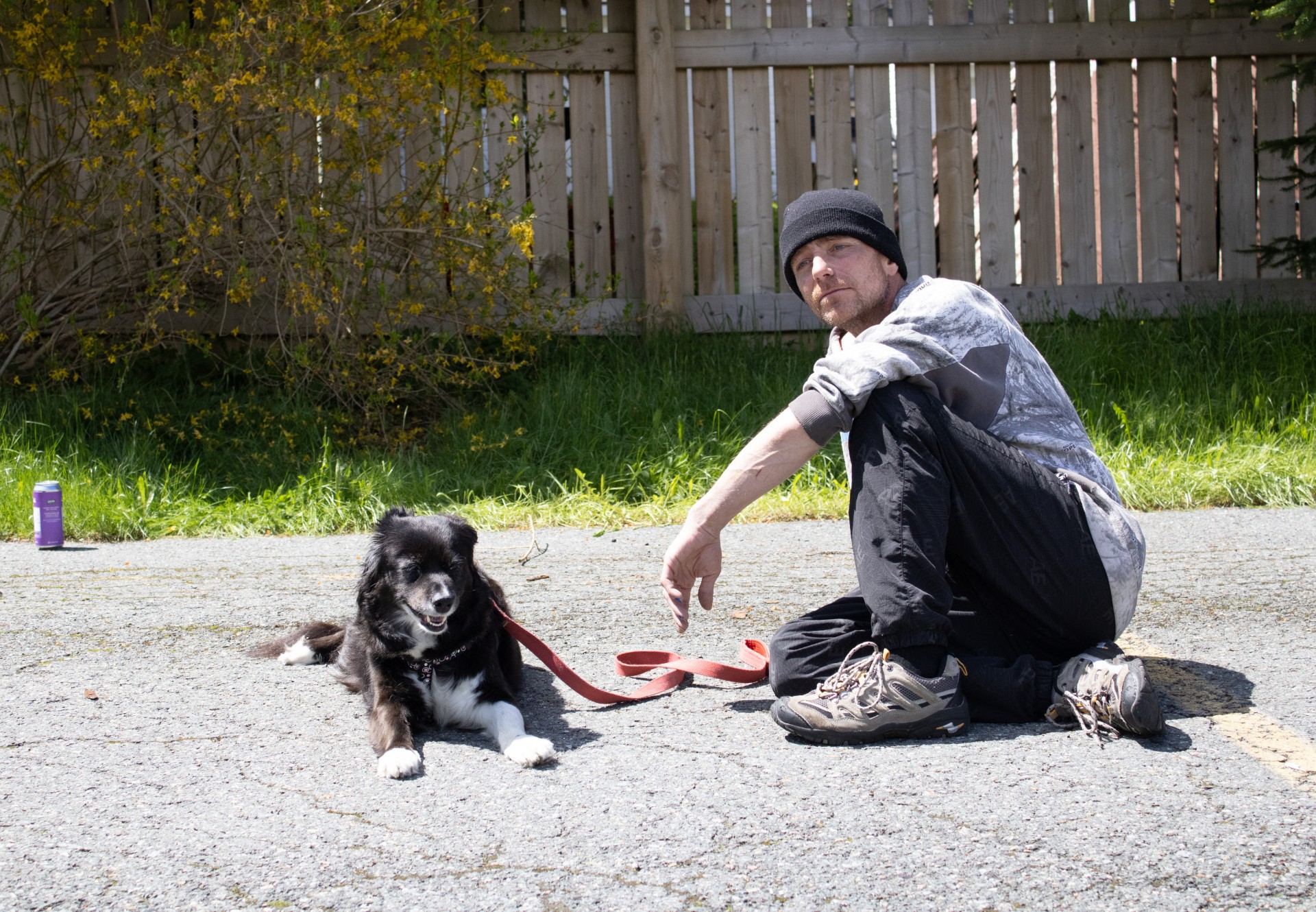
McCain and his dog currently live in a shelter. He has applied for affordable apartments but rarely hears anything back and has not had a viewing yet.
“It’s a lot of stigma being homeless and in shelters,” said McCain, “We do got rights, but you’re either an addict or you’re mental. Your opinion don’t count. You’re not respected.
“Even if I gets dressed up and stuff, even I lies and says I’m working, even if I says I’m homeless, there’s a big stigma comes with it.”

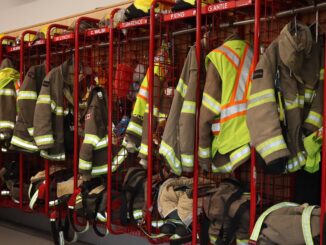


Be the first to comment